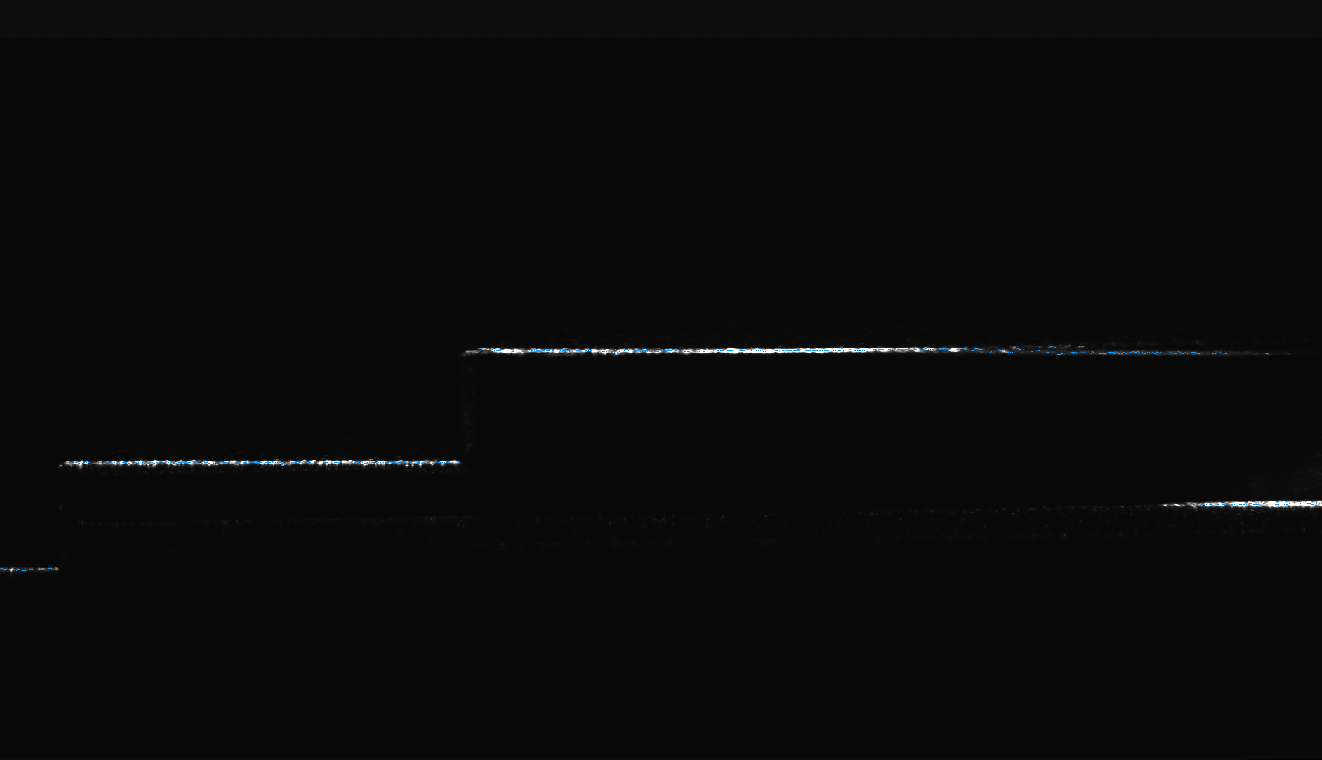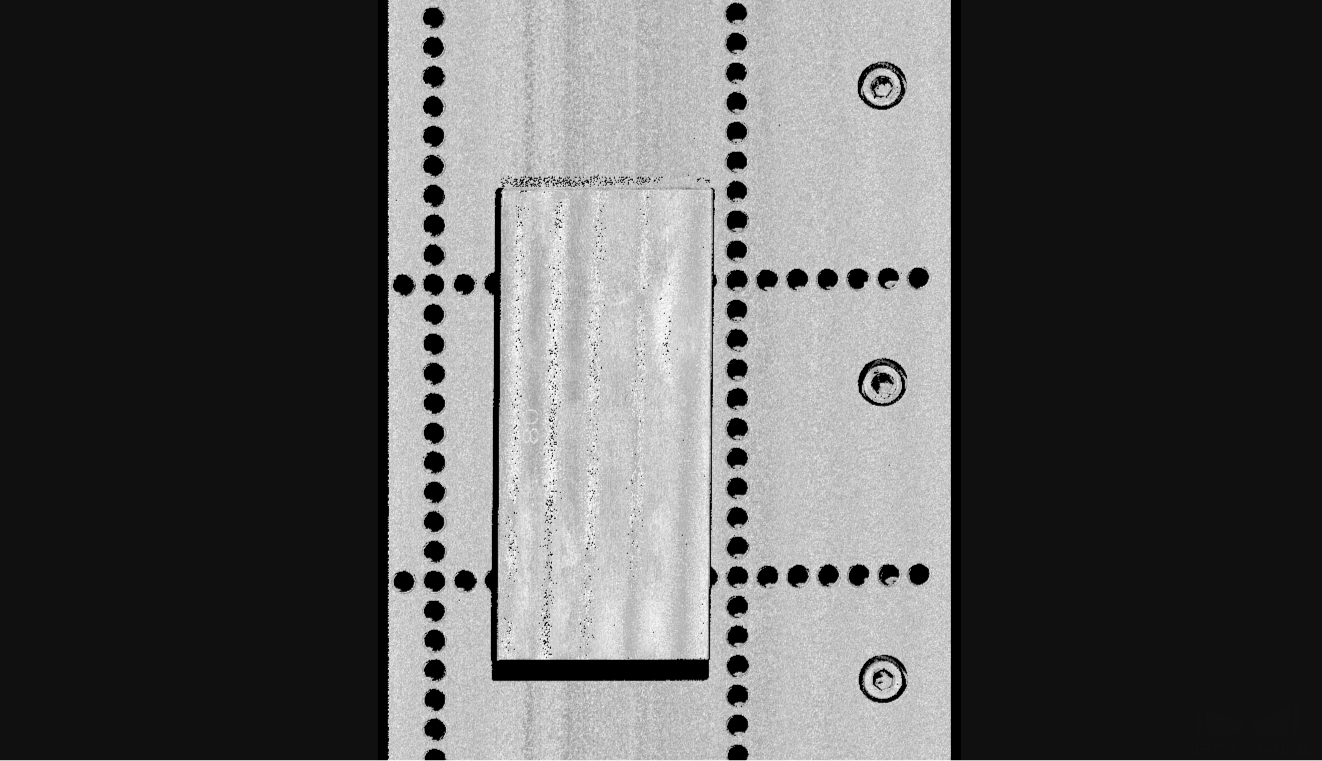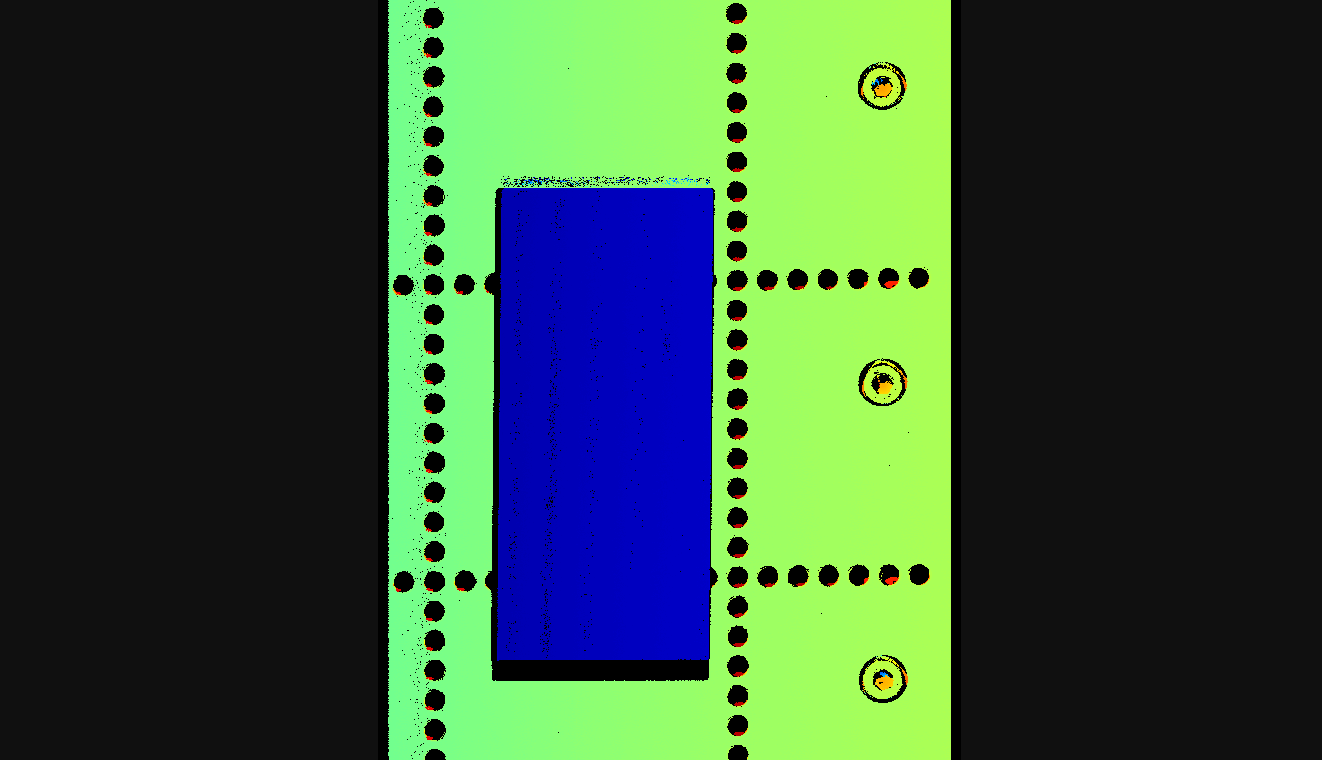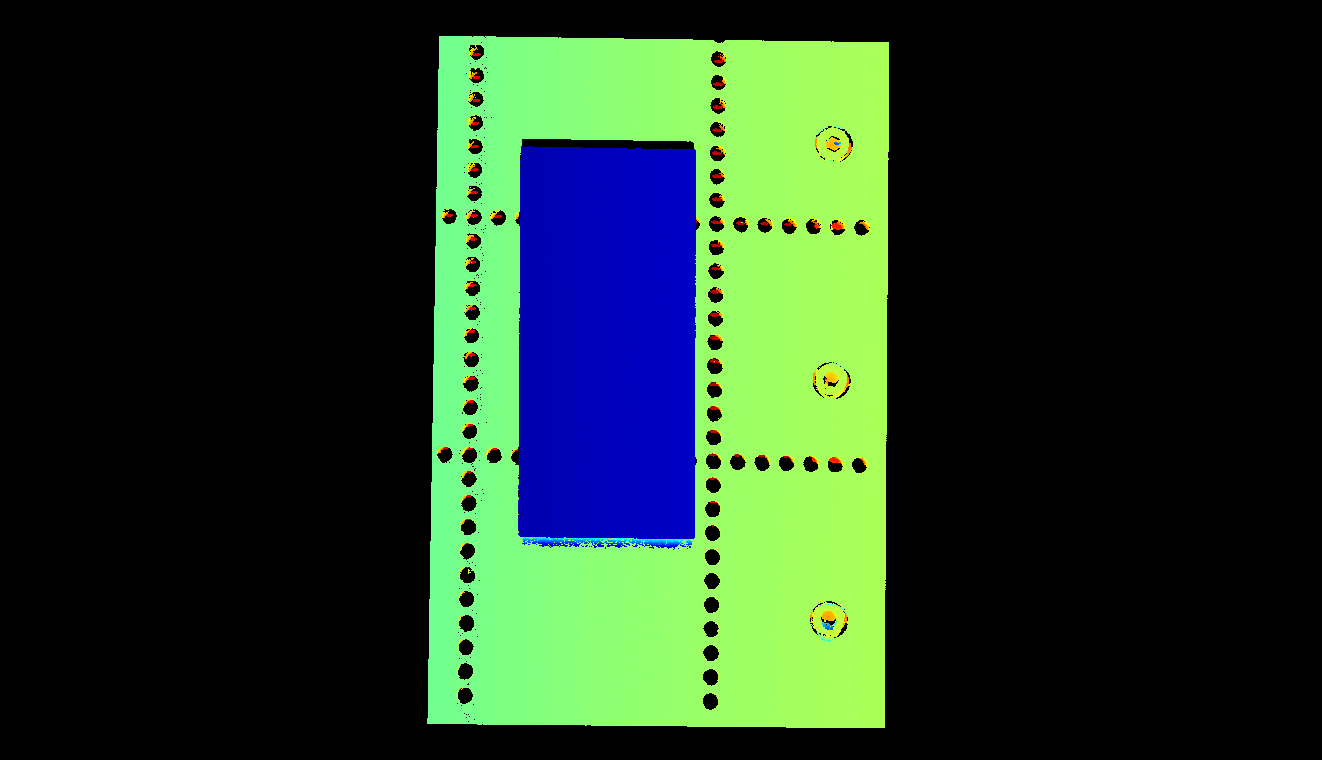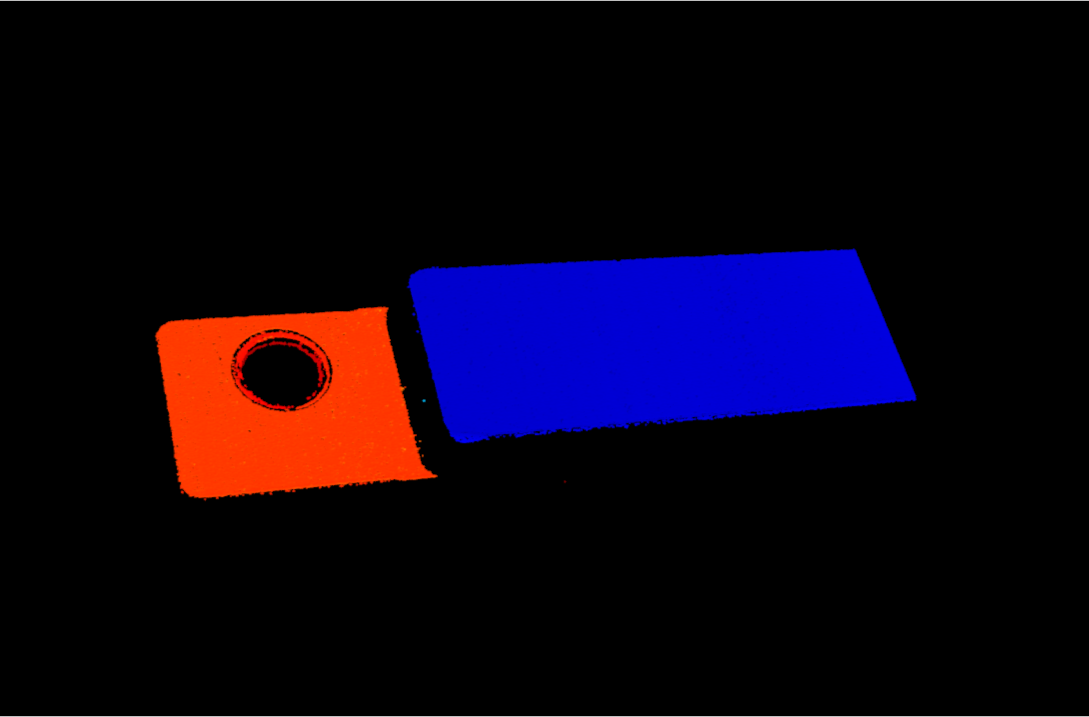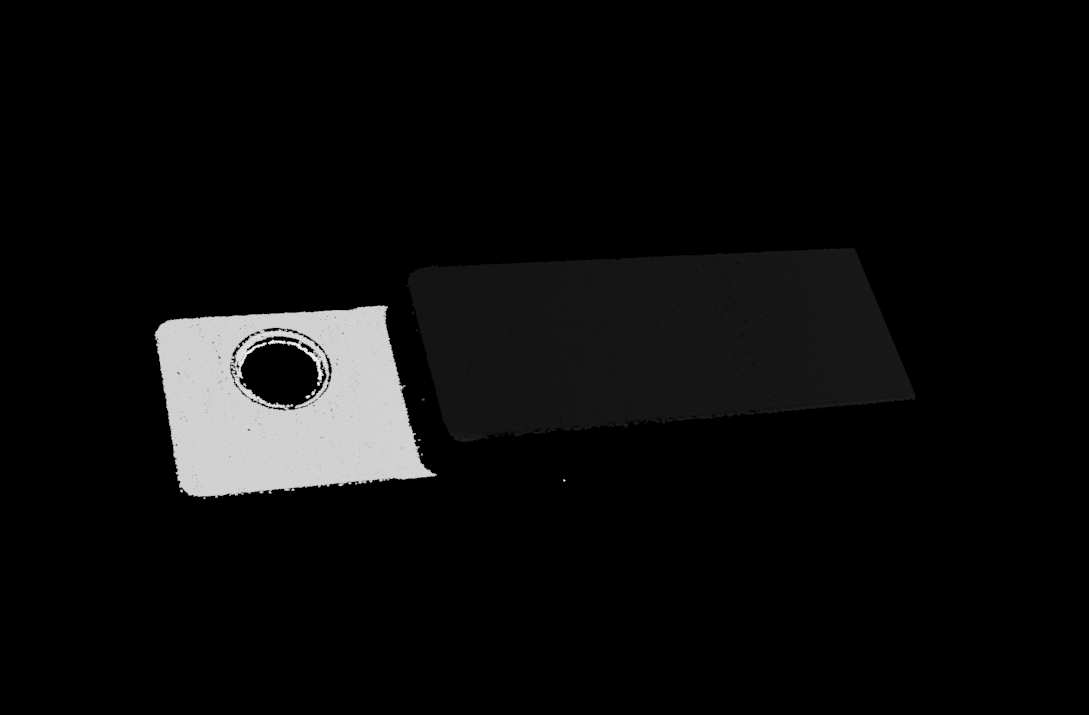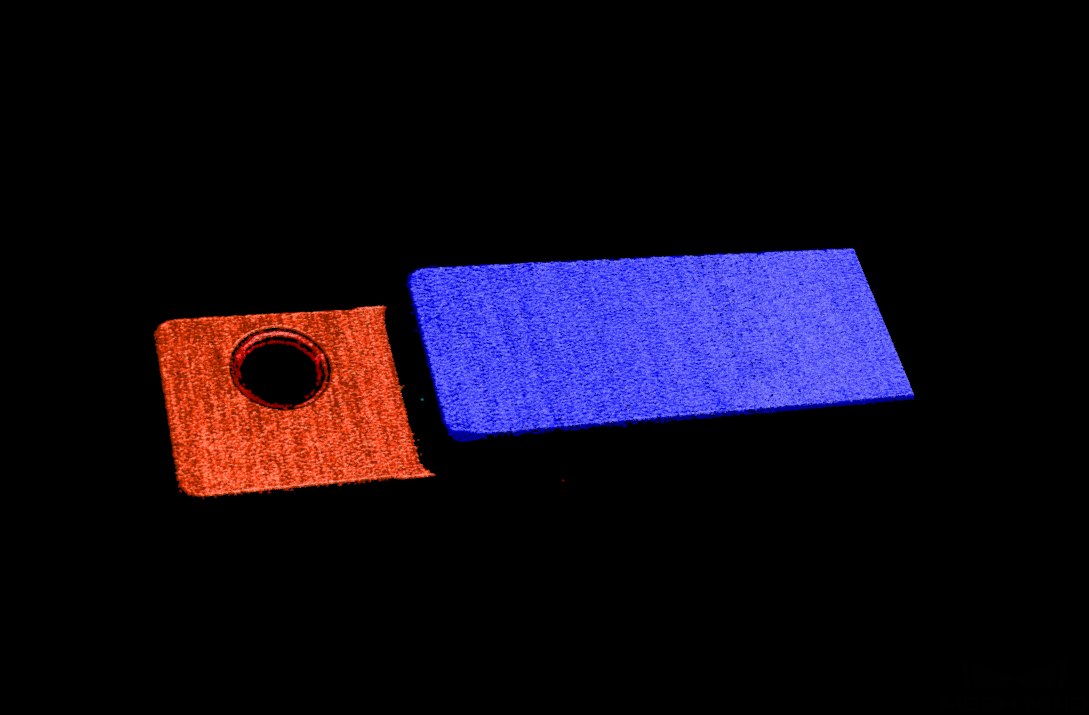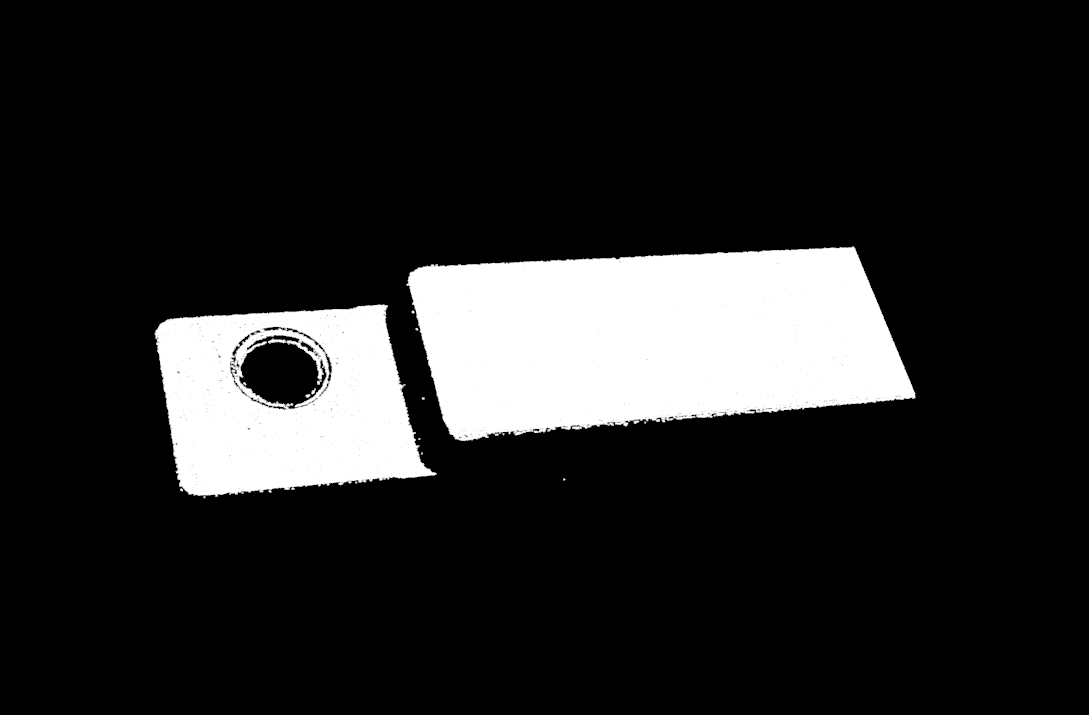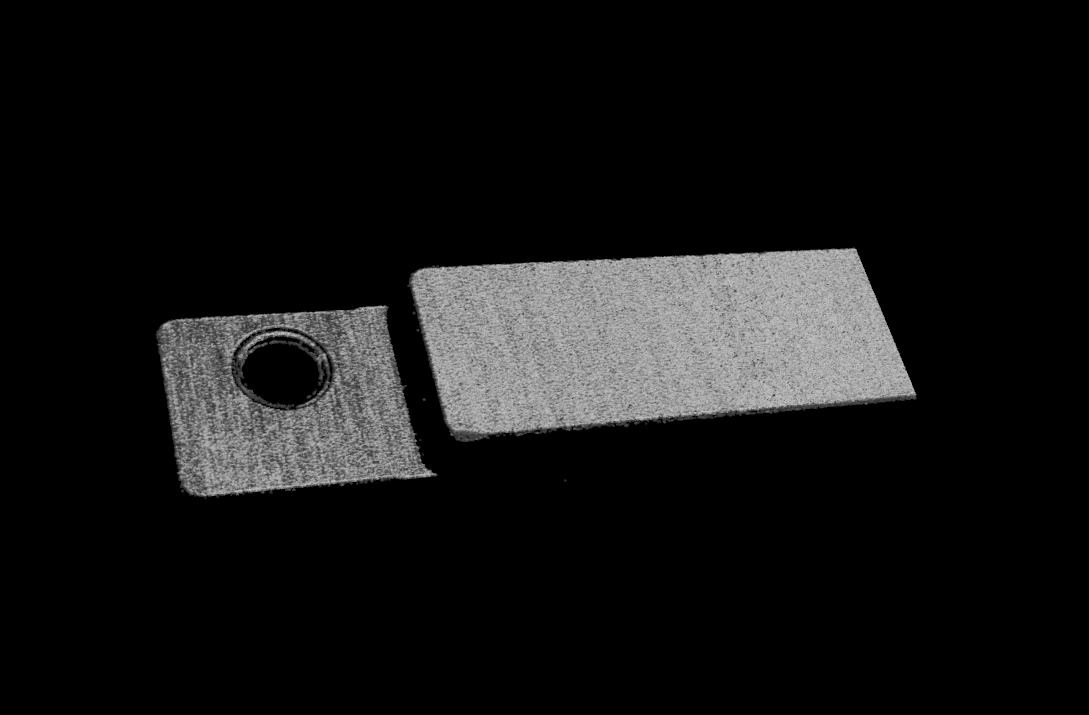Acquire and View Data
Once the laser profiler is successfully connected, the following interface is displayed. In this interface, you can switch the data acquisition mode, acquire data, and view the data.

-
Switch Data Acquisition Mode
-
Acquire Data
-
Switch Data Type
Switch Data Acquisition Mode
Click the corresponding button to switch the data acquisition mode:
-
Profile mode: used to acquire the raw image and profile, and adjust the relevant parameters.
-
Scan mode: used to acquire the intensity image, depth map, and point cloud, and adjust the relevant parameters.
| Read Scanning Mechanism of Laser Profiler to familiarize yourself with the scanning mechanism of the laser profiler. |
Acquire Data
You can acquire data with the ![]() and
and ![]() buttons in the data acquisition area. The functions of these buttons differ in different data acquisition modes.
buttons in the data acquisition area. The functions of these buttons differ in different data acquisition modes.
Profile Mode
In the profile mode, click the above buttons to acquire the raw image and profile.
-
 : Click this button to acquire one raw image and one profile.
: Click this button to acquire one raw image and one profile. -
 Click this button to start acquiring raw images and profiles continuously at the predetermined interval. After the acquisition has started, this button changes to
Click this button to start acquiring raw images and profiles continuously at the predetermined interval. After the acquisition has started, this button changes to  . Click it again to stop the continuous acquisition.
. Click it again to stop the continuous acquisition.
Scan Mode
In the scan mode, the functions of the above buttons differ according to the method of triggering data acquisition in use.
| Read Methods for Triggering Data Acquisition and Workflow of Triggering Data Acquisition to familiarize yourself with the different methods of triggering the laser profiler to acquire data. |
-
External:
-
 : This button is not available.
: This button is not available. -
 : Enter the laser profiler into the acquisition ready status. The laser profiler can only respond to externally input signals after it enters the acquisition ready status.
: Enter the laser profiler into the acquisition ready status. The laser profiler can only respond to externally input signals after it enters the acquisition ready status.
-
-
Software:
-
 : Enter the laser profiler into the acquisition ready status and start one round of data acquisition. After the acquisition has started, this button changes to
: Enter the laser profiler into the acquisition ready status and start one round of data acquisition. After the acquisition has started, this button changes to  . Click it again to stop the current round of data acquisition.
. Click it again to stop the current round of data acquisition. -
 : Enter the laser profiler into the acquisition ready status and start rounds of data acquisition continuously. After the acquisition has started, this button changes to
: Enter the laser profiler into the acquisition ready status and start rounds of data acquisition continuously. After the acquisition has started, this button changes to  . Click it again to stop the continuous acquisition.
. Click it again to stop the continuous acquisition.
-
Switch Data Type
The laser profiler outputs multiple types of data to Mech-Eye Viewer. Click the data type buttons to view the corresponding type of data.
Data Types in Profile Mode
In the profile mode, you can view the Raw Image and Profile types of data.
| Data type | Description | Example |
|---|---|---|
Raw image |
Used to check the brightness and location of the laser lines. |
|
Profile |
Used to check the profile extraction result, such as the amount of gaps in the profile. |
|
Explanation of the raw image
The following figure is a raw image obtained in the profile mode. In which:
-
The white line is the laser line.
-
The line composed of the blue dots is the extracted profile. Each blue dot is a spot, which is the data point extracted from each column of pixels in the raw image.
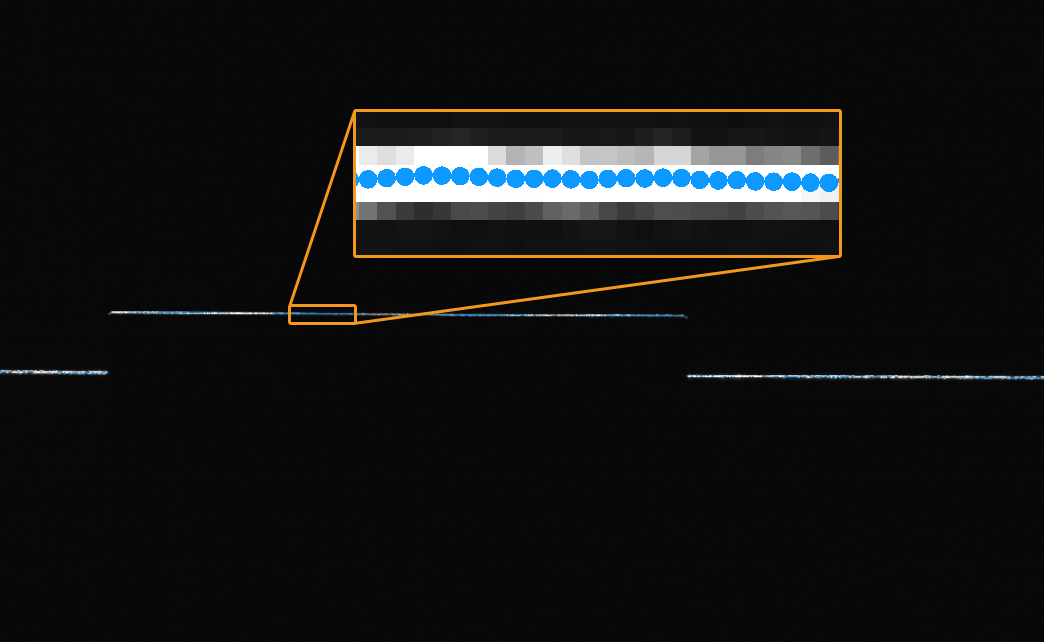
Data Types in Scan Mode
In the scan mode, you can view the Intensity Image, Depth Map, and Point Cloud types of data.
| Data type | Description | Example |
|---|---|---|
Intensity image |
A 2D image that represents the reflectivity of the object surface |
|
Depth map |
A 2D image that contains the depth information of the object surface |
|
Point cloud |
A collection of data points that represent the 3D shape of the object surface |
|
Adjust Data Display
In the data display area, you can adjust the display of the data through mouse actions, keyboard, and buttons and menus in the software interface.
Adjust Raw Image Display
In the raw image display, you can perform the following actions:
-
Zoom: While the cursor is on the raw image, scroll the mouse wheel to zoom the raw image.
-
Move: While the raw image is zoomed in, hold and drag to move the raw image.
-
Reset size: Right-click the raw image and select Reset View to fit it to the window.
-
Check grayscale values: In the image information box at the lower right of the raw image, you can check the grayscale value of the pixel where the cursor is located.
To hide the image information box, uncheck Image Information Box in the View menu.
Adjust Profile Display
In the profile display, you can perform the following actions:
-
Zoom: While the cursor is on the profile, scroll the mouse wheel to zoom the profile.
-
Move: While the profile is zoomed in, hold and drag to move the profile.
-
Reset size: Right-click the profile and select Reset View to fit it to the window.
Adjust Intensity Image Display
In the intensity image display, you can perform the following actions:
-
Zoom: While the cursor is on the intensity image, scroll the mouse wheel to zoom the intensity image.
-
Move: While the intensity image is zoomed in, hold and drag to move the intensity image.
-
Reset size: Right-click the intensity image and select Reset View to fit it to the window.
-
Check pixel position and grayscale values: In the image information box at the lower right of the intensity image, you can check the pixel position and grayscale values of the pixel where the cursor is located.
-
The pixel position of the upper-left corner of the image is (0, 0).
-
To hide the image information box, uncheck Image Information Box in the View menu.
-
Adjust Depth Map Display
In the depth map display, you can perform the following actions:
-
Zoom: While the cursor is on the depth map, scroll the mouse wheel to zoom the depth map.
-
Move: While the depth map is zoomed in, hold and drag to move the depth map.
-
Reset size: Right-click the depth map and select Reset View to fit it to the window.
-
Check pixel position and coordinates: In the image information box at the lower right of the depth map, you can check the pixel position and coordinates (in mm) in the laser profiler reference frame of the pixel where the cursor is located.
-
The pixel position of the upper-left corner of the image is (0, 0).
-
To hide the image information box, uncheck Image Information Box in the View menu.
-
-
Adjust depth data display: The display of the depth data can be adjusted in the left panel. For detailed instructions, please refer to Adjust Depth Data Display.
Adjust Point Cloud Display
In the point cloud display, you can perform the following actions:
-
Zoom: While the cursor is on the point cloud, scroll the mouse wheel to zoom the point cloud.
-
Rotate:
-
Rotate in 3D space: Hold the left mouse button and drag to rotate the point cloud.
-
Rotate in 2D plane: While holding the Ctrl key, hold the left mouse button and drag to rotate the point cloud.
-
-
Pan: Hold the mouse wheel and drag to pan the point cloud.
-
Reset the view:
-
Press the R key to reset the panning of the view, and adjust the zoom of the point cloud to a default level.
-
Press the Backspace key to reset the panning and rotation of the view, and adjust the zoom of the point cloud to a default level.
-
-
Adjust depth data display: The display of the depth data can be adjusted in the left panel. For detailed instructions, please refer to Adjust Depth Data Display.
-
Point Cloud Exhibit: This function moves the point cloud along a predetermined trajectory to display it from various angles. For detailed instructions, please refer to Point Cloud Exhibit.
Adjust Depth Data Display
In the left panel of the depth map or point cloud display, you can adjust the display reference frame, color rendering, and range of the depth data.
Change Reference Frame
In the Reference Frame menu at the top of the left panel, you can select the reference frame used for displaying the depth data.
-
Device (default): displays the depth data in the laser profiler reference frame.
-
Custom: displays the depth data in the custom reference frame defined by the user.
| The reference frame setting is simultaneously applied to both depth map and point cloud. |
Change Color Rendering
In the Color menu in the left panel, you can choose the color rendering scheme of the depth data.
The Jet, Grayscale, and Jet + intensity options are available for both the depth map and point cloud. When one of these three options is selected, the depth range of the color rendering can be adjusted.
| Option | Description | Example |
|---|---|---|
Jet |
Depth values are displayed in different colors of the jet color scheme. |
|
Grayscale |
Depth values are displayed in different shades of gray. |
|
Jet + intensity |
The intensity information of the object surface is overlaid on the jet color scheme. Suitable for checking the object surface features and depth changes at the same time. |
|
The Untextured and Textured options are only available for the point cloud.
| Option | Description | Example |
|---|---|---|
Untextured |
Displays the untextured, white point cloud. |
|
Textured |
Display the point cloud textured with the intensity image. |
|
| When Untextured or Textured is selected, if you switch to the depth map display and then switch back to the point cloud display, the Color setting will be automatically changed to the option selected in the depth map display. |
Adjust Depth Range of Color Rendering
When the depth map and point cloud are displayed in Jet ,Grayscale or Jet + intensity, every time data acquisition is performed, Mech-Eye Viewer automatically adjusts the color rendering according to the range of the obtained depth data.
With the functions in the Range section of the left panel, you can adjust the depth range in which the color is rendered, in order to conveniently observe the depth variation in a specific range.
| The depth range of color rendering is simultaneously applied to both depth map and point cloud. |
Follow these steps to adjust the color rendering range of the depth data:
-
Adjust the range of depth data to be displayed: adjust the Min and Max values at the two ends of the slider. Depth data outside this range is not displayed.
-
Check the rough depth: On the depth map, move the cursor to the area to be observed, and check the third value of Coordinates in the image information box in the lower right. This is the depth value.
-
Adjust depth range of color rendering: Move the slider handles or enter the depth values on the right of the slider to adjust the depth range of color rendering according to your needs.
After adjusting the range, the depth values outside this range are displayed in the colors corresponding to the minimum/maximum depth values.
-
Lock the range: If you need to compare the depth variations in the same range across multiple acquisitions, you can check the Lock option above the slider. When you acquire data again, the depth range of color rendering manually adjusted will be used.
| To change back to the automatically adjusted range, uncheck Lock and click Reset to the upper right. |
Point Cloud Exhibit
This function moves the point cloud along a predetermined trajectory to display it from various angles, suitable for scenarios such as exhibits.
Follow these steps to use the Point Cloud Exhibit function:
-
Check Point Cloud Exhibit in the View menu, and a Play button will appear in the upper right of the point cloud display.
-
Click Play, and the point cloud will start moving along the predetermined trajectory.
-
While the point cloud is moving, the Play button is changed to Stop. Click Stop, and the point cloud will stop moving.
This topic introduced data acquisition and data types. The next topic will introduce actions related to parameters.
